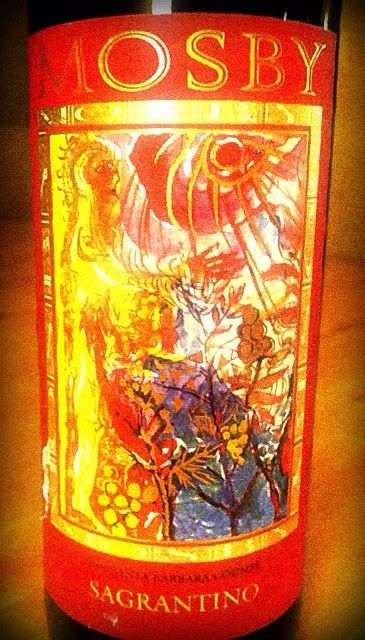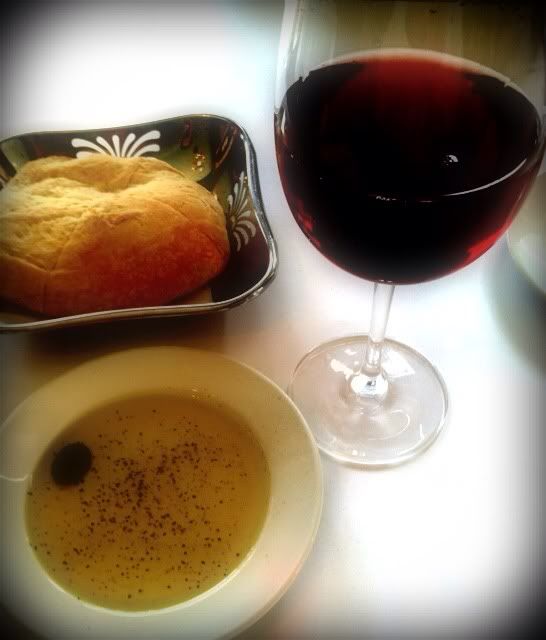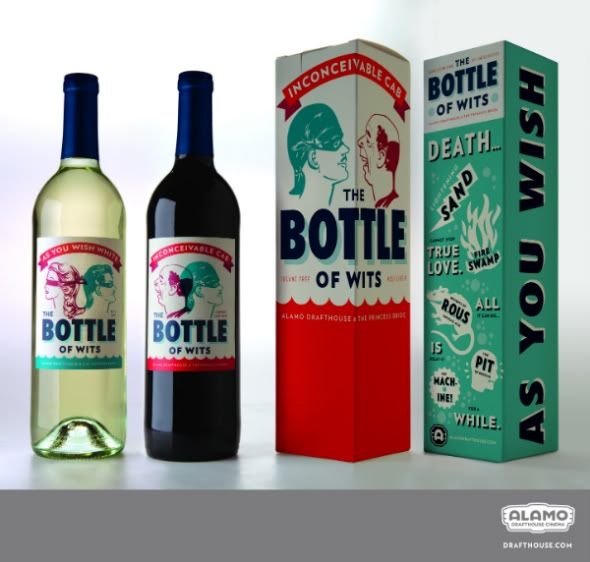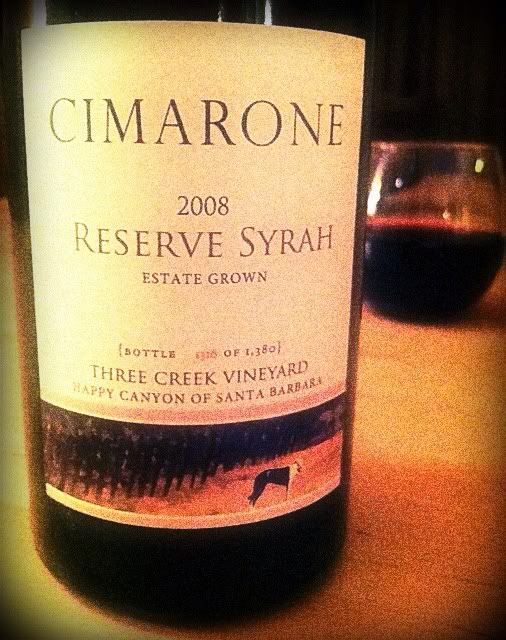The Iowa wine industry has seen dramatic growth in the 21st century. The Hawkeye State now features somewhere around 92 licensed wineries and over 300 vineyards in Iowa, according to Iowa State University's Midwest Grape and Wine Industry Institute. That organization cites 13 wineries and 15 vineyards in Iowa back in 1999, so the growth of Iowa's wine indistry has been on the fast track. Iowa produced nearly 223,000 gallons of wine in 2009, which puts the state about in the middle of the pack for wine production by state.
The Agricultural Marketing Resource Center notes that the growth of the Iowa wine industry since 1999 has actually been a rebirth:
"During the early 20th century, Iowa was the sixth-largest grape producer in the nation. The industry declined as a result of Prohibition, the growing market for corn and soybeans, damage to grapevines caused by the drift of herbicides and the Armistice Day blizzard in 1940."
Iowa's hot summers and cold winters make grape growing a challenge. Iowa winegrowers rely heavily on French hybrids and grapes native to America. There aren't a lot of vineyards doing much with vitis vinifera grapes due to those extreme conditions.
Just five minutes west of Des Moines - in Waukee, Iowa - a Tuscan-inspired structure is home to Schade Creek Winery and their tasting room. It also serves as a beautiful wedding location, an event with which they have a lot of experience. For wine lovers, it's hard to beat getting married on a spot that overlooks a vineyard.
Kurt and Jana Schade run the winery, which is no small feat considering it's not the main occupation of the household. From what I could gather in a flurry of hurried emails while I was sampling their wines, they both wear more hats than many of us would care to. That's the glamour of the wine business, eh?
All the grapes used by Schade Creek are estate grown. Since Iowa has no appellations, however, they can’t claim the status of an “estate wine” on the label. The Schades were kind enough to provide samples of their wines for this edition of the Wine Country series.
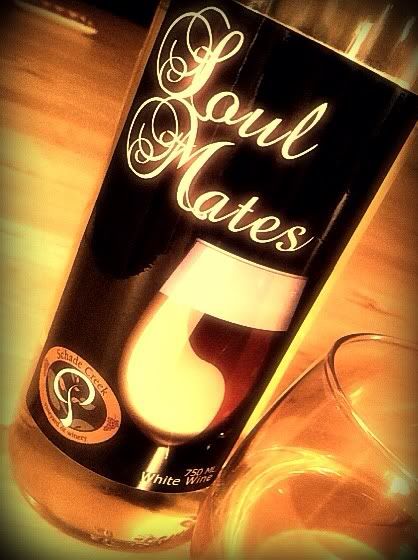 Soul Mates White Table Wine
Soul Mates White Table Wine
This is a blend of half Steuben and half Golden Muscat, a red and a white grape. The skins were removed before the red color could escape, leaving a wine tinted with only a golden straw hue. It offers "a touch of sweetness,” according to the Schades, and is dedicated to loved ones the Schades have lost.
The nose shows an intense earthiness and a strong herbal note, too. The herbaceous quality isn't really grassy, but it shows a sense of earth with a layer of sweetness. It's a semi-sweet wine, characterized by flavors of apples mixed with cherries. Razor sharp acidity is a lip-smacking delight at room temperature. Served chilled, that herbal aroma is just as forceful, while the acidity is diminished in the lower temperature, but still zippy. Not at all cloying, Soul Mates' sweetness is kept in check by the earthy minerals.
 Creme de la Creme Blanc White Table Wine
Creme de la Creme Blanc White Table Wine
This is another white wine. The grapes used here are 100% Niagara variety. Niagara is the leading white grape variety grown in America. You usually see them as table grapes, or made into jelly or grape juice. In Iowa, they make a pretty good wine with them. Creme de la Creme Blanc has a lighter tint than Soul Mates. The nose shows a bit more sweetness, and the herbal scent is there, too, but there is not so much earthiness. The palate also has more sweetness to offer, with golden apple flavors and a slight hint of butterscotch. The acidity is just as brilliant as in Soul Mates. There's no flabbiness here. It’s a delicious drink.
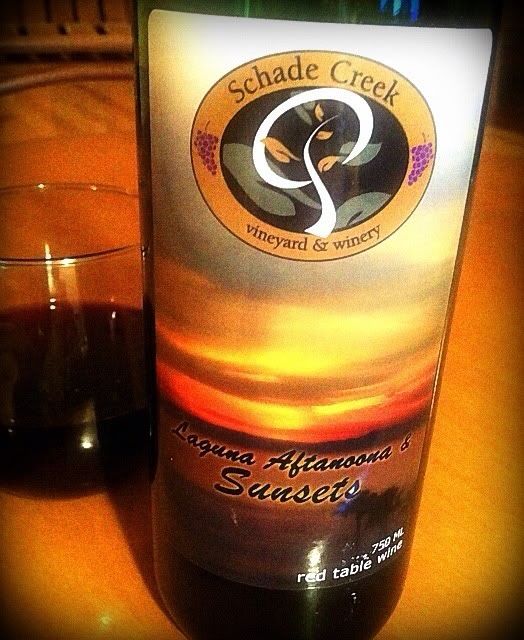 Laguna Aftanoona & Sunsets Red Table Wine
Laguna Aftanoona & Sunsets Red Table Wine
This wine is my first experience with the Foch grape, a French hybrid. It’s an early-ripening, cold-hardy grape, which makes it ideal for growing in Iowa. The wine is medium dark and ruby red, and the mouthfeel is light and easy with red fruit - raspberry and sour cherry. The
acidity is very good. An earthy mineral note on the nose comes through on the palate, too, and brambly cherry notes highlight the finish. I am really taken with this one - it reminds me quite a lot of a Beaujolais wine - the fresh fruit and nice acidity imitating that French region’s Gamay quite well.
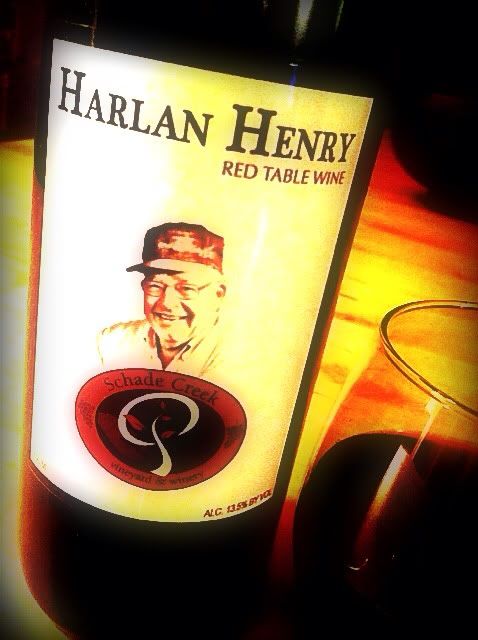 Harlan Henry Red Table Wine
Harlan Henry Red Table Wine
Harlan Henry was named for the winemaker’s father. It’s a product of 100% Noiret grapes. Noiret is a hybrid of vitis labrusca and vitis vinifera. The folks at Schade Creek say it’s Iowa’s version of Pinot Noir, and they may well be right. The nose is just gorgeous, full of ripe cherry and raspberry with a touch of red licorice. On the palate, the fruit is bright and playful, but a dark undercurrent cuts through and brings complexity. The acidity is marvelous, and there's an outstanding tannic structure to this wine. Lambrusco meets Pinot Noir meets Cabernet Franc is how it strikes me, and that strikes me just fine. I would imagine every wine lover in Iowa is drinking Harlan Henry. If they're not, it's their loss.
Kurt Schade has acheived something winemakers in all 50 states strive for: he has identified the grapes that work well in his growing region, and he makes good wine from them.
Further interesting reading about Iowa wine can be found at these links:
The Iowa Winegrowers Association has links to Iowa wineries and information about the four wine trails in the state.
The excellent web publication Drink Local Wine has covered Iowa wine a few times, and you can see their articles here.


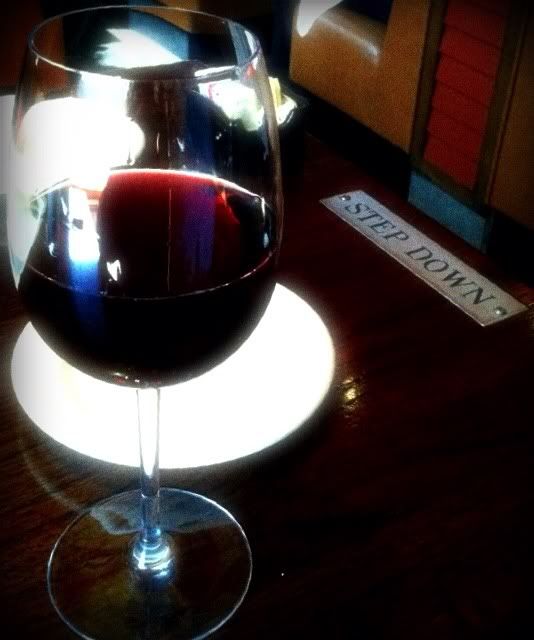

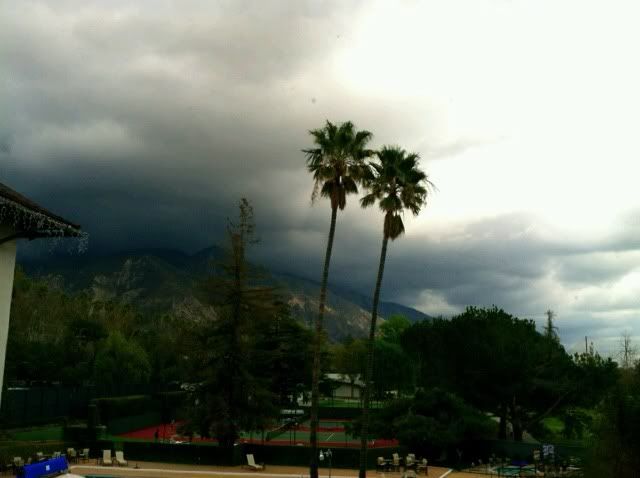 It’s billed as the Pasadena PinotFest even though the event is now held at the Altadena Country Club. The drive north from Pasadena toward the foothills is a short one, and the surroundings are absolutely beautiful at the ACC, even on a gray day.
It’s billed as the Pasadena PinotFest even though the event is now held at the Altadena Country Club. The drive north from Pasadena toward the foothills is a short one, and the surroundings are absolutely beautiful at the ACC, even on a gray day. 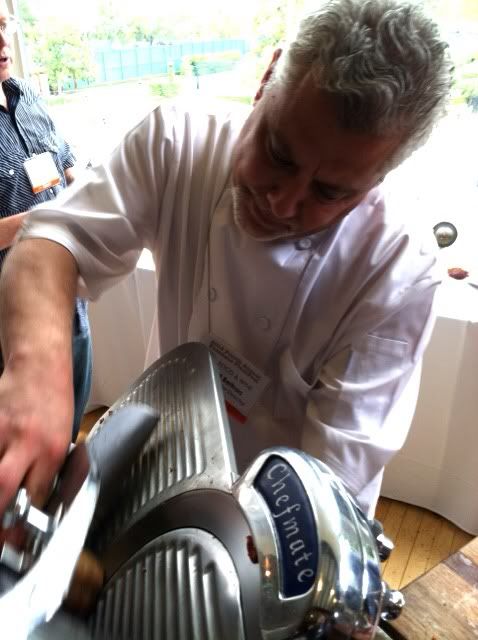 After bumping my way around the room, I took refuge in Hall Two every so often. It was a lot roomier and there was a food station there.
After bumping my way around the room, I took refuge in Hall Two every so often. It was a lot roomier and there was a food station there. 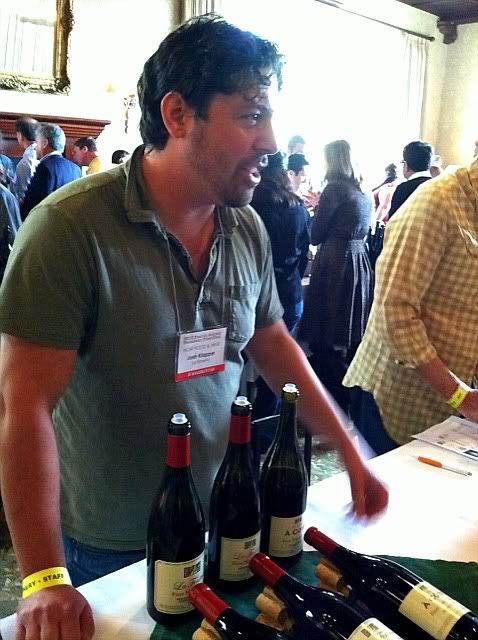 I’ve been seeing Joshua Klapper (right) so often lately my wife is starting to get jealous. I’ve run into Klapper and his
I’ve been seeing Joshua Klapper (right) so often lately my wife is starting to get jealous. I’ve run into Klapper and his 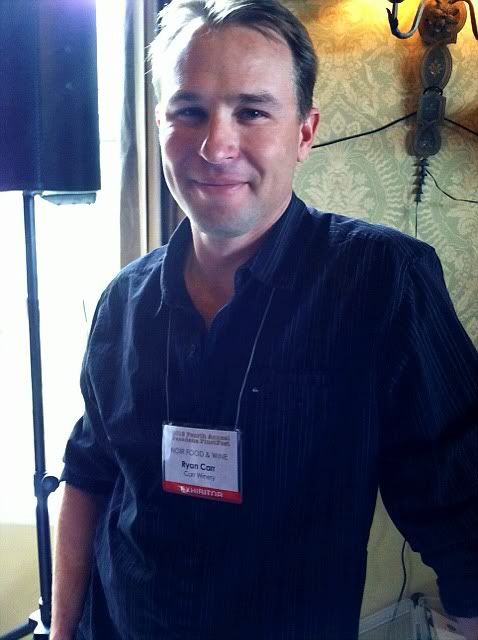
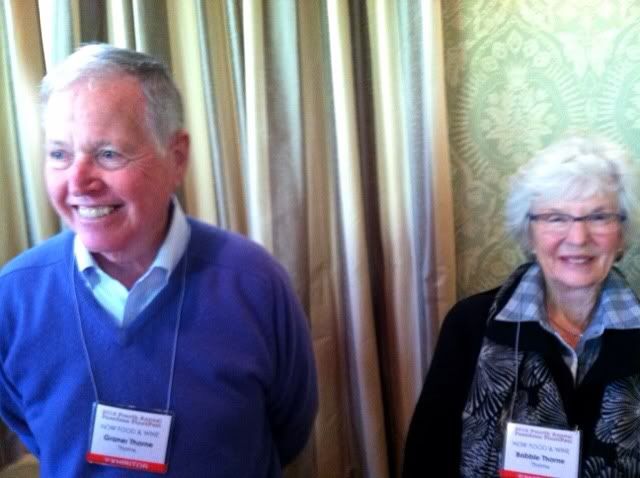 Graner and Bobbie Thorne (right) provided a delightful representation for their
Graner and Bobbie Thorne (right) provided a delightful representation for their 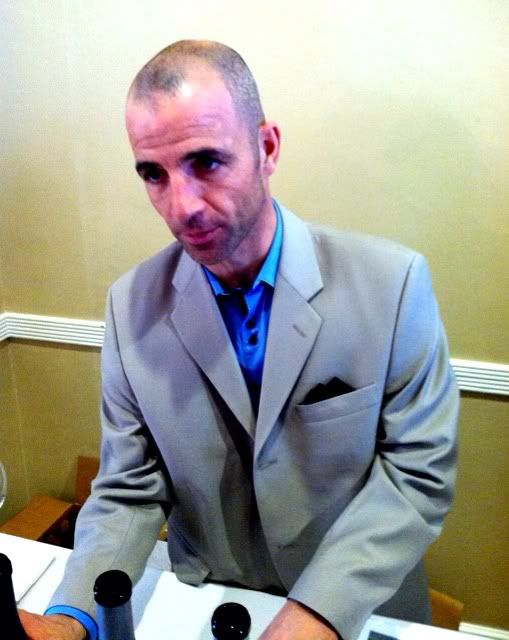 The Riboli Family has winemaker Arnaud Debons (left) working out of their
The Riboli Family has winemaker Arnaud Debons (left) working out of their  Rick Longoria (right) seemed happy to have me end up there. His 2010
Rick Longoria (right) seemed happy to have me end up there. His 2010 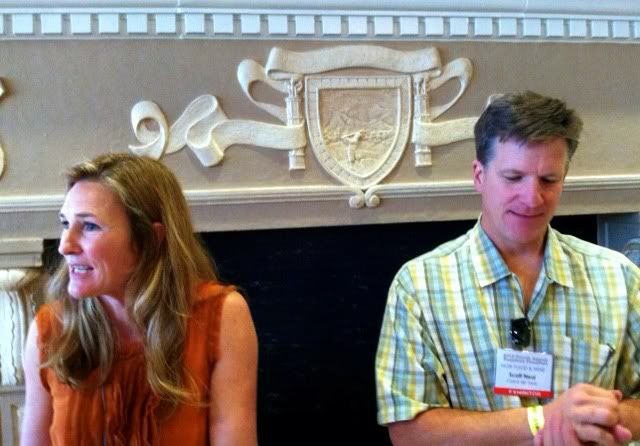 Scott and Lisa Neal (left) are a husband/wife winemaking team of
Scott and Lisa Neal (left) are a husband/wife winemaking team of 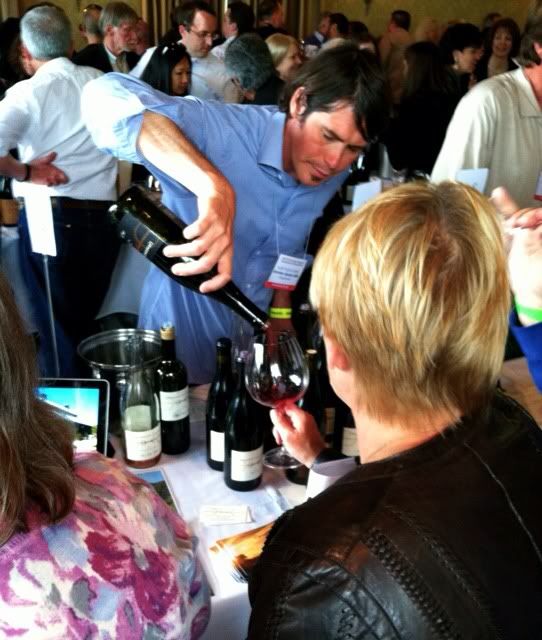 Brandon Sparks-Gillis (right) was a busy man - a pouring machine, in fact, when I showed up. The
Brandon Sparks-Gillis (right) was a busy man - a pouring machine, in fact, when I showed up. The 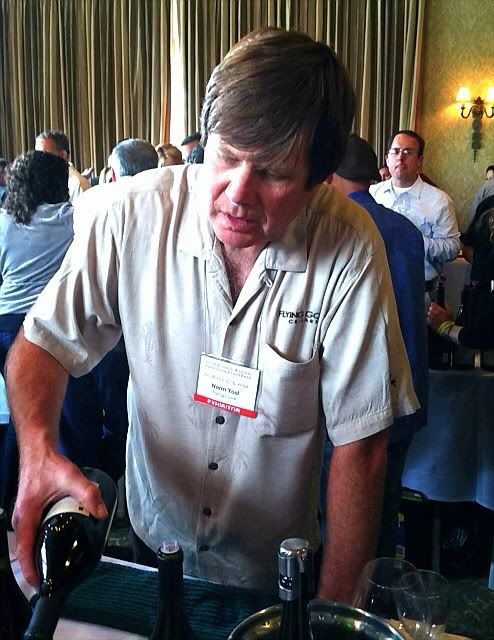 I could barely get close enough to the
I could barely get close enough to the 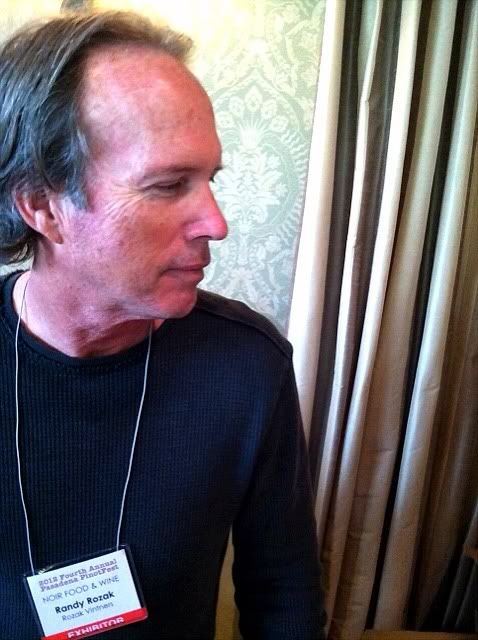 Randy Rozak, (right) of
Randy Rozak, (right) of  Rebecca Work (left) poured at the
Rebecca Work (left) poured at the 
